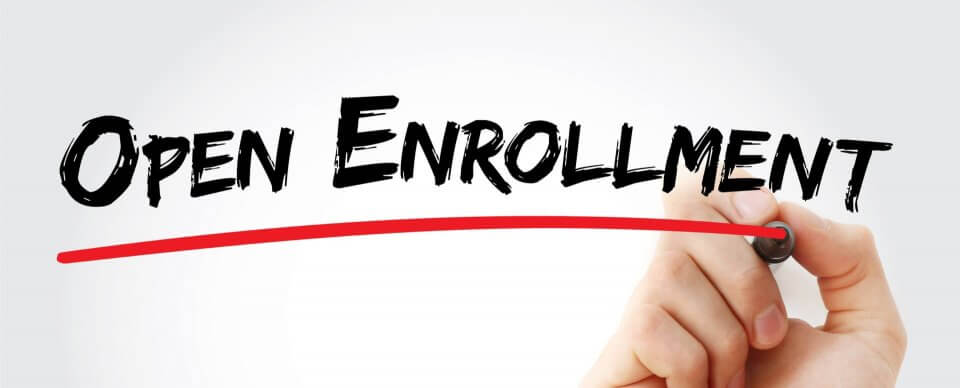
Open Enrollment is a window of time when people can sign up for health insurance. They can also make changes to their coverage, or drop their health insurance coverage. Healthcare open enrollment was only for employer-sponsored health insurance, but with the passing of the Affordable Care Act, it was introduced to the individual market in 2013. This made individual coverage similar to group coverage and those who were previously denied for pre-existing conditions can now get coverage.
What is Open Enrollment?
Open Enrollment is a critical period during which individuals can make changes to their health insurance coverage, typically occurring once a year. This window of opportunity allows employees, retirees, and individuals to review, select, and modify their health plans to better suit their needs and circumstances. Open Enrollment provides a chance to add or remove dependents, switch between different healthcare plans, or make adjustments to other benefits, such as dental or vision coverage. It is an essential aspect of navigating the complex landscape of healthcare options, empowering individuals to take control of their medical coverage and ensure they have the most suitable and cost-effective plan for the upcoming year. Understanding the details and deadlines of Open Enrollment is crucial to ensuring comprehensive and personalized healthcare coverage.
Understanding Open Enrollment Periods
Open Enrollment Periods are designated time frames during which individuals can enroll in or make changes to their healthcare insurance or employee benefit plans. These periods typically occur once a year, allowing individuals to evaluate their current coverage, explore new options, and make informed decisions based on their changing needs. Understanding Open Enrollment is crucial as it presents a unique opportunity to secure suitable coverage for oneself and one’s family. During this period, individuals can switch plans, add or remove dependents, and adjust their coverage levels.
Moreover, it is important to be aware of specific deadlines since missing the Open Enrollment window may result in limited or no access to benefits until the following year, with exceptions only for qualifying life events. Staying informed about changes in policies and available plans can help individuals make the most cost-effective and comprehensive choices that align with their healthcare and financial objectives.
For Health Insurance
The Open Enrollment Period for health insurance is a crucial time for individuals and families to review and make changes to their healthcare coverage. This annual window, typically lasting several weeks, allows people to enroll in a new health insurance plan, switch plans, or make adjustments to their existing coverage. During this period, individuals can explore different health insurance options, considering factors such as premiums, deductibles, and coverage networks to find a plan that best suits their needs and budget. It also provides an opportunity for those without health insurance to obtain coverage, protecting them from unexpected medical expenses. Open Enrollment periods play a vital role in promoting healthcare accessibility and ensuring that people have adequate coverage to address their health concerns. It is essential for individuals to stay informed about the dates of the Open Enrollment period in their region and take advantage of this opportunity to secure comprehensive health insurance for themselves and their families.
For Medicare
This is a critical time for millions of eligible individuals in the United States. It typically occurs annually from October 15 to December 7, allowing beneficiaries to make changes to their Medicare coverage. During this period, participants can switch from Original Medicare to a Medicare Advantage plan or vice versa, change their existing Medicare Advantage plan, and add or drop prescription drug coverage (Part D). This is an opportunity for beneficiaries to review their healthcare needs, consider any changes in their health status, and explore new plan options that may better suit their medical requirements and budget. It’s crucial for individuals to carefully assess their choices during this period to ensure they have the most appropriate and cost-effective coverage for the upcoming year.
Key Dates and Deadlines in Open Enrollment
Open enrollment periods are crucial for individuals and employees to make important decisions regarding their benefits and healthcare coverage. The process typically involves selecting health insurance plans, retirement options, and other benefits for the upcoming year. The key dates and deadlines in open enrollment vary depending on the specific organization or marketplace. Generally, open enrollment for employer-sponsored plans occurs annually during a specific time frame, often in the fall. During this period, employees must review their benefit options, make changes to their existing plans, or enroll in new ones. It is essential for individuals to mark their calendars and stay informed about these key dates to ensure they do not miss the opportunity to make beneficial changes to their coverage.
Timeline for Health Marketplace
Health marketplace open enrollment refers to the period when individuals can shop for and enroll in health insurance plans through government-run or private health insurance exchanges. This timeline is generally set by the government and typically occurs once a year. During this period, individuals can explore various health insurance plans, compare their costs and benefits, and choose the one that best suits their needs and budget. The marketplace open enrollment period is especially important for those who do not have access to employer-sponsored plans or government programs like Medicaid. Individuals must be aware of the start and end dates of the open enrollment period to ensure they obtain health insurance coverage for the upcoming year. Missing this window may require them to wait for the next open enrollment period or qualify for a Special Enrollment period due to certain life events, such as marriage or job loss.
How to Prepare for Open Enrollment
Preparing for open enrollment involves several essential steps, with reviewing your current coverage being a crucial one. Start by carefully examining your existing health, dental, vision, and other insurance plans to understand the extent of your coverage and the benefits they offer. Take note of any changes that have occurred since the last enrollment period and assess whether your needs have evolved. Consider factors such as premium costs, deductibles, copayments, and out-of-pocket maximums. Analyze how well your current plans align with your healthcare requirements and future expectations. By taking the time to assess your current coverage comprehensively, you can make informed decisions during open enrollment to ensure you select the most suitable and cost-effective options for the year ahead.
Proof of Documentation of Your Qualifying Event
If you want to make changes to your health care plan, or want to enroll outside of open enrollment, then you will need to provide proof of your qualifying life event. You can do this during a special enrollment period (SEP).
Here are examples of common qualifying life events and proper documentation:
| Qualifying Event | Eligible Documents | |
| You have a new baby, or you adopt | Add your child(ren) to your existing plan. | Adoption papers or birth certificate |
| You get married or divorced. | After marriage, you have 60 days to join your spouse’s plan; if you lose coverage because of a divorce, you are eligible for SEP. | Marriage certificate or your court papers that show that you stopped receiving health care coverage because of the divorce. |
| You gain U.S. citizenship | Becoming a citizen qualifies you for special enrollment | Provide your naturalization certificate or certificate of citizenship |
| You move to a new zip code | Must be a permanent move to a new region or state that does not offer your existing plan | You will need proof of residency and a letter from your insurer that shows that you had coverage for at least one day during the 60 days before your move. |
Health Insurance Options
During open enrollment periods, individuals and families have the opportunity to explore various health insurance options to secure coverage for the upcoming year. Open enrollment typically occurs once a year and allows individuals to make changes to their existing health insurance plans or enroll in new ones. One of the primary health insurance options available is employer-sponsored insurance. Many employers offer comprehensive health coverage as part of their benefits package, providing employees and their families with access to medical services and treatments. Employer-sponsored plans often come with the advantage of cost-sharing, where employers contribute a portion of the premium, making it a more affordable option for employees.
Employer-Sponsored Insurance
Employer-sponsored insurance remains a popular choice among individuals due to its convenience and often more affordable premiums. With this type of coverage, employers negotiate with insurance companies to provide health plans to their employees and their dependents. The plans may vary in coverage levels and costs, offering options such as Health Maintenance Organization (HMO), Preferred Provider Organization (PPO), or High Deductible Health Plans (HDHP). While employer-sponsored insurance is a valuable benefit for employees, it is essential to carefully review the plan’s details during open enrollment to ensure it meets the individual and family’s specific healthcare needs and preferences.
Individual and Family Health Plans
For those who do not have access to employer-sponsored insurance or are self-employed, individual and family health plans may be purchased privately or acquired through the government health marketplace. These plans are designed to provide coverage for individuals and their families, offering a range of benefits and premium levels to suit different budgets and healthcare requirements. Individual and family health plans can be purchased through state marketplaces or private insurance companies. They typically offer a variety of coverage options, such as basic essential health benefits or more comprehensive plans that cover additional services like maternity care and prescription drugs. During open enrollment, individuals should carefully compare the available plans to find the one that best aligns with their healthcare needs and financial capabilities.
Choosing Between HMO, PPO, EPO, and POS Plans
Open Enrollment is an essential period during which individuals can evaluate and select the most suitable health insurance plan for their needs, with four primary options available: Health Maintenance Organization (HMO), Preferred Provider Organization (PPO), Exclusive Provider Organization (EPO), and Point of Service (POS) plans. Each plan comes with distinct features and benefits, requiring careful consideration to make an informed decision. HMO plans typically offer lower premiums and require members to choose a primary care physician, while PPO plans provide more flexibility by allowing members to visit out-of-network providers at a higher cost. EPO plans combine elements of HMO and PPO, offering in-network coverage only, but without requiring a primary care physician. POS plans allow members to access out-of-network providers, but they require a primary care physician’s referral for specialist visits. Ultimately, understanding the nuances of each plan is crucial during Open Enrollment to ensure individuals and families secure comprehensive coverage that aligns with their healthcare preferences and financial considerations.
Impact of High-Deductible Plans and HSAs
One significant trend that has emerged in recent years is the growing popularity of High-Deductible Health Plans (HDHPs) coupled with Health Savings Accounts (HSAs). This combination aims to empower consumers to take greater control of their healthcare expenses by offering lower monthly premiums in exchange for higher deductibles. The impact of such plans and HSAs has helped provide financial flexibility and tax advantages for some individuals, fostering a culture of cost-consciousness and responsible healthcare spending.
Can I make changes outside of the open enrollment period?
Outside of the open enrollment period, making changes to your healthcare coverage may be limited, but certain life events could trigger a special enrollment period. During the standard open enrollment period, you can typically make changes to your health insurance plan, add or remove dependents, or switch plans without any restrictions. However, if you experience a qualifying life event such as marriage, divorce, birth of a child, loss of other health coverage, or a significant change in income, you may be eligible for a special enrollment period. This allows you to make necessary adjustments to your coverage outside of the regular open enrollment period, ensuring you have the necessary health insurance coverage during times of significant life changes.
What if I missed the deadline for open enrollment?
If you missed the deadline for open enrollment, it can be a cause for concern but all hope is not lost. While missing the deadline may limit your immediate options, it’s essential to act swiftly to explore alternative solutions. Reach out to your human resources department or the insurance provider to see if there are any exceptional circumstances that could grant you a late enrollment opportunity. In some cases, life events like marriage, childbirth, or loss of previous coverage may qualify you for a special enrollment period. If those avenues are unavailable, consider other options such as short-term health insurance, private insurance, or exploring coverage through a spouse or family member’s plan. Regardless of the approach, taking proactive steps is crucial to ensuring you maintain the necessary health coverage for you and your family.
Freeway Insurance’s Support and Resources during Open Enrollment
Freeway Insurance offers affordable health insurance plans for you and your family. We provide customized options based on your budget and needs. You can get a free health insurance quote online, or you can call us at 800-777-5620 to speak with an expert insurance agent who can answer your questions and help you find a health insurance plan that works best for you.



